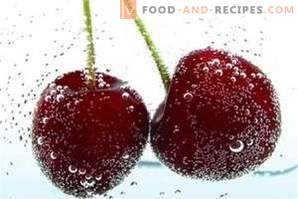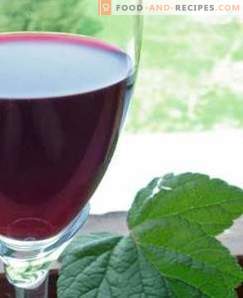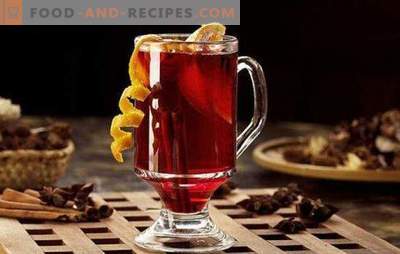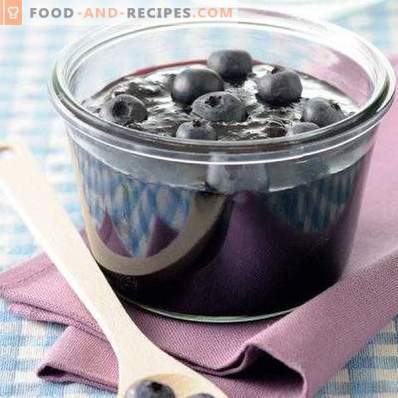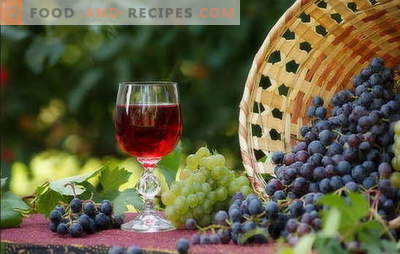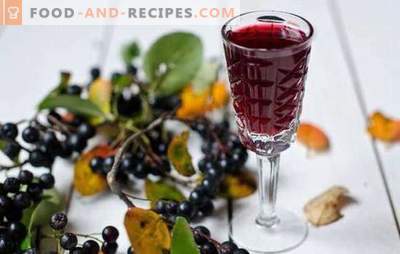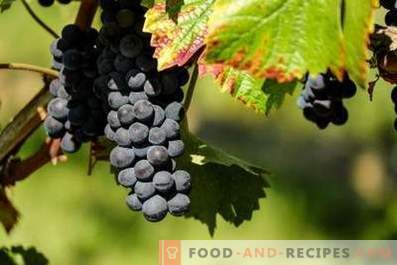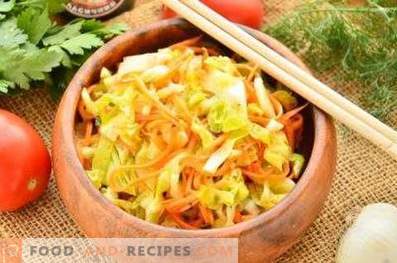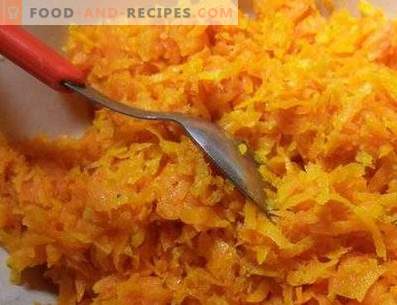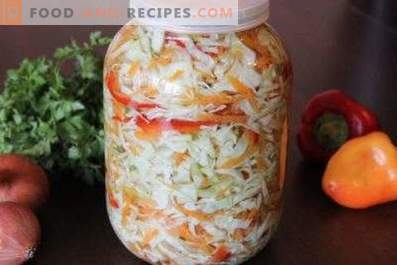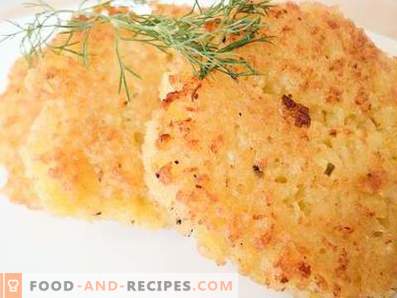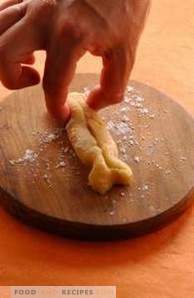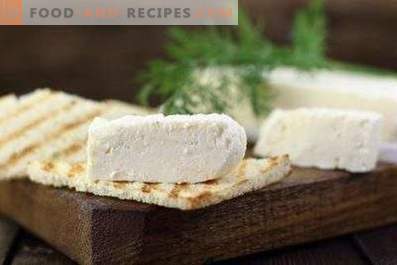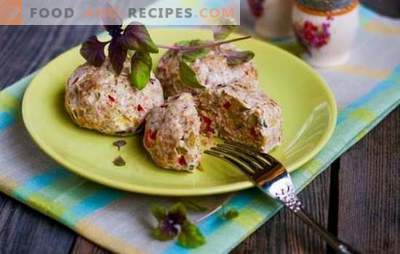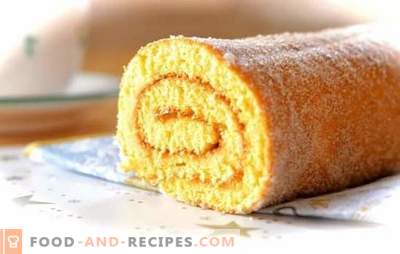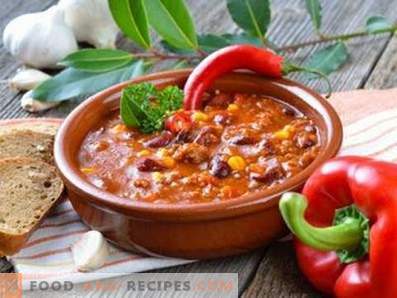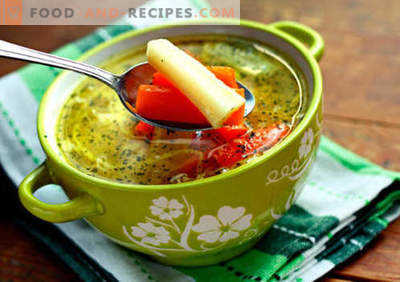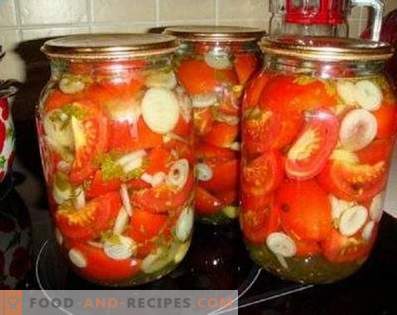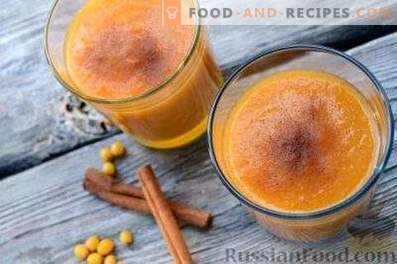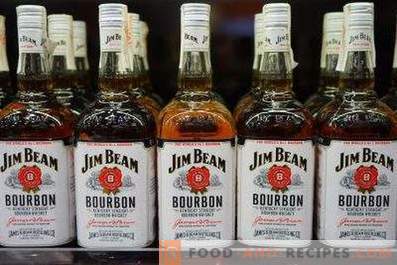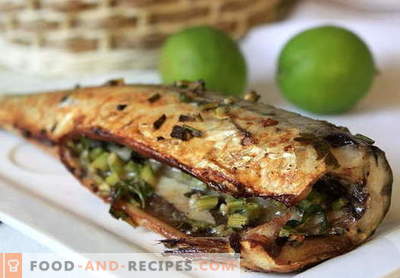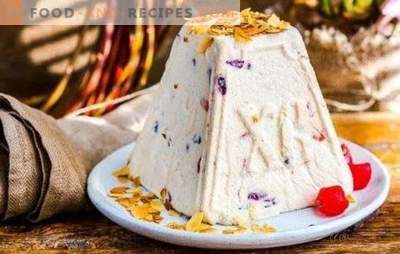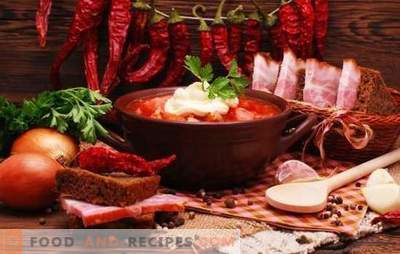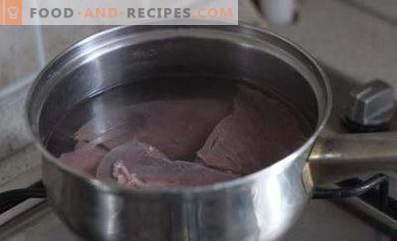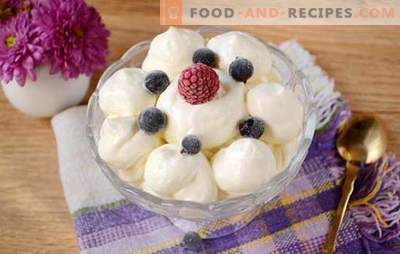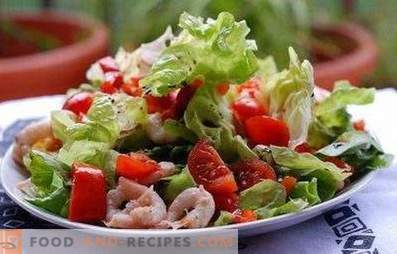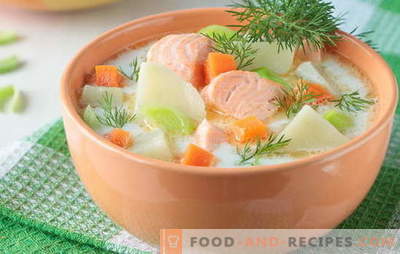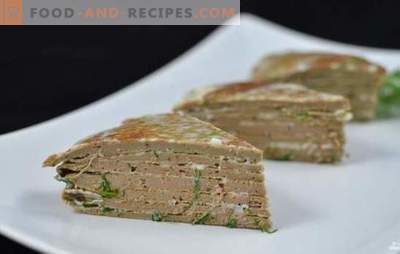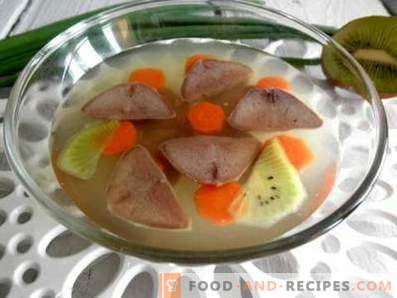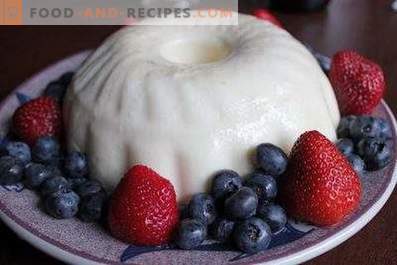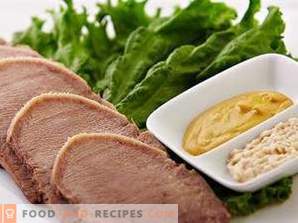
The taste and aroma of blueberry wine usually does not cause any complaints. Noble rich tone, soft harmonious taste, aftertaste, reminiscent of some varieties of noble grape wines - all this makes wine from blueberries, which is prepared at home is also possible, one of the most respected alcoholic beverages. This berry is suitable for the manufacture of any wines: table, dessert, - as well as liqueurs and tinctures.
Subtleties of technology
It is not uncommon for a blueberry wort to “get sick”, as a result of which the drink does not come out at all or it turns out to be tasteless and muddy. Therefore, it is necessary to observe the technology of making blueberry wine exactly.
- Only fresh blueberries are good for winemaking, that is, harvested in the last 24 hours. Berries should be ripe, but not overripe. It is necessary to sort through them carefully, throwing out not only the leaves, but also the crumpled berries.
- On the surface of the berries live bacteria that make fermentation possible without the addition of additional components. Blueberries are no exception. But if it is not washed and relied on blueberry yeast, the result is unpredictable. One of the main requirements in the manufacture of blueberry wines - the maintenance of purity. To prevent the ingress of pathogenic microorganisms in the wort is impossible. Therefore, it is necessary to wash the berries, and this should be done well.
- When working with blueberries, it makes sense to wear surgical gloves on your hands. This will prevent bacteria from getting into the wort from the hands and will protect the hands themselves from blueberry juice, which tends to dye the skin blue.
- According to some recipes, juice from blueberries is required to obtain mash after blocking, but experienced winemakers say that this approach is justified for any other berry, except blueberries. From it, the juice must be squeezed immediately, while it is fresh. To do this, knead the berry and squeeze juice from the resulting pulp through gauze. It will be less than what would happen when using a typical technology, but the risk that the wine will deteriorate, not having time to mature, in this case is minimized.
- In order to avoid early termination of fermentation, you should not dilute the blueberry juice too much: the maximum ratio is 2 liters of water per 1 kg of blueberries.
- To improve fermentation, no matter which blueberry wine recipe is chosen, you can add a little (0.4 g) ammonium chloride to 1 l of wort.
- The ideal option is to use the blueberry wort for fermenting pure culture wine yeast, although many winemakers use home-made sourdough and get a good result. To make yeast at home from raisins, 150 g of dried fruits should be filled with granulated sugar in an amount of 50 g, pour warm water to make it 2 cm above the raisin level, and put in a warm ferment for 8-9 days.
For the rest, the technology of making blueberry wine differs little from making drinks from other berries. The only difference is a long period of clarification, so you have to be patient.
Classic Blueberry Wine Recipe
Composition:
- blueberries - 2 kg;
- water - 1 l;
- sugar - 0.5 kg;
- wine ferment - 50 ml (or 2 g of pure culture wine yeast).
Preparation Method:
- Warm up the berries in the water bath: they give the juice more warm. Grind with an immersion blender. Put the pulp in gauze, folded in 3-4 layers, squeeze juice through it.
- Dilute the juice with boiled water, cooled to 25 degrees.
- Add 0, 3 kg of granulated sugar.
- Place in a well-washed glass bottle, install a water seal on its neck.
- After a week, pour half a glass of wort through a straw, dissolve 0, 2 kg of sugar in it and pour the syrup back into the bottle.
- It will be good to wander blueberry wort at a temperature of 20 to 25 degrees, not lower and not higher. The process will be long, take about one and a half months. If it lasts longer, then the wort will need to be poured into another container, being careful not to overflow the sediment, and leave the fermentation already in it.
- After fermentation, the drink is poured, freed from sediment, poured into a clean container, closed, and moved to a cooler room (16-20 degrees). Here the wine will be defended. It will take from 3 months to a year. Until the wine is completely clarified, it should be poured once every month and a half, separating from the sediment.
- The finished wine is bottled. It is stored for 3 years.
According to this recipe, you will get about one and a half liters of table wine with a strength of 10-12 degrees.
Homemade blueberry wine with honey
Composition:
- blueberries - 1, 5 kg;
- water - 2 l;
- sugar - 1, 2 kg;
- lime or floral honey - 0, 2 kg;
- starter wine - 60 ml (or 2, 5 g of pure culture wine yeast).
Preparation Method:
- Crush clean blueberries, squeeze juice out of the mash, before filling it with 0.5 l of warm boiled water.
- Prepare a syrup from the remaining water, sugar and honey, mix blueberry juice with it.
- Wine should be fermented in a container under the water seal at a temperature of 22 to 25 degrees. After the fermentation process is completed, it must be drained, freed from sediment, and put in a cooler room to lighten.
- After 3-6 months, when the wine becomes transparent, it should be drained, leaving the sediment in the bottle, filtered, bottled.
According to this traditional recipe, semi-sweet and sweet table wines are made, their strength is from 10 to 14 degrees.
Pouring blueberries
Composition:
- blueberries - 1, 5 kg;
- vodka - 1, 5 l.
Preparation Method:
- Pour clean and peeled blueberries into a three-liter jar.
- Fill the berry with vodka.
- Close the jar with a capron lid, wrap the paper on top and place it in the sun. Shake the can once a week.
- After 3 months, it remains to strain the bottle, bottled. Keep them better tilted.
The result is a fairly strong drink with a pleasant color and aroma. He drinks easily, but you can't call him sweet.
Blueberry tincture
Composition:
- blueberries - 0, 6 kg;
- vodka - 0.5 liters;
- water - 100 ml;
- granulated sugar - 100 g.
Preparation Method:
- Pick, wash blueberries. Pour into a 1.5 liter bottle through the funnel. You can use two with a capacity of 0, 75 liters, but then all the ingredients listed in the recipe should be divided equally.
- Pour sugar into the bottle, pour in water and vodka. Insist in a warm place for 21 days, shaking the bottle daily.
- Strain the infusion, pour into bottles in which it will be stored.
Infusion can be drunk or used to make blueberry liqueur.
Blueberry liqueur
Composition:
- blueberry tincture - 1 l;
- granulated sugar - 100 g.
Preparation Method:
- Mix the infusion with sugar and heat to dissolve it. Try not to bring to a boil.
- Cool, bottle, and store.
Some liqueur is made even from pulp left over from the preparation of the liqueur. To do this, it is filled with sugar, placed in a bottle. After a month, the pulp is squeezed, the resulting liquid is filtered and drunk.
Blueberry-grape wine
Composition:
- grapes (red) - 5 kg;
- blueberries - 2, 5 kg;
- granulated sugar - 0, 25 kg.
Preparation Method:
- From unwashed blueberries and grapes squeeze juice, mix.
- Add sugar to the blend.
- Drain it in the bottle (with water seal) for fermentation.
- After fermentation, transfer to another bottle, let the wine settle.
- Drain, freeing from sediment, filter. After that, it remains to be bottled.
Dry wine prepared according to this recipe is refined and original, has a unique bouquet.
